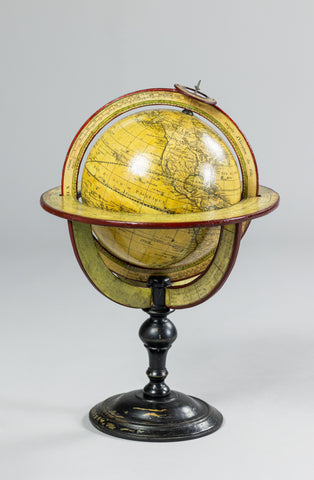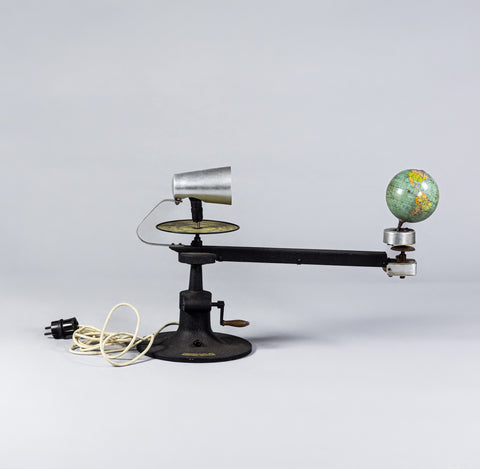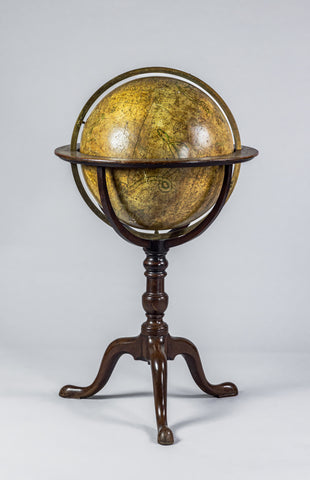
Charles Smith and Son (fl. 1803 – 1862), Smith’s Terrestrial Globe; Smith’s Celestial Globe
Charles Smith and Son (fl. 1803 – 1862)
Smith’s Terrestrial Globe; Smith’s Celestial Globe
London, 172 Strand, ca. 1830
Diameter 18 in.; Height 43 in.
A fine pair of library globes each made up of two sets of twelve engraved globe gores, with title cartouches, later varnish with some light discoloration of the gores, a few stress fractures to the terrestrial. The Pacific marking the tracks of Cook 1776-1778, La Perouse 1786, and Vancouver 1793-95. Brass hour circles, brass meridian circles with an engraved graticule to one face. The globes mounted on their original elegant English mahogany tripod stands, papered horizon bars, supported by four quadrants, with central turned wooden pillar and curved feet, cross-stretchers supporting glazed compasses, lacking pointers. Brass castors.
A fine pair of attractive library globes on elegant “Georgian” stands. By the early 19th century, globes had become an essential element to any Englishman’s library or study, and Smith was among the leading English globe makes of this period. He was the Engraver and Map Seller Extraordinary to HRH Prince of Wales. Charles Smith started out his map publishing business in London around 1803, but with his son joining the business they branched out into the globe market around 1827 when they moved to a new address at 172 Strand. This move into globe production was principally because the market opened up with the decline in the Cary and Newton businesses. This Smith globe making business was later taken over by George Phillips and Son.
Smith’s Terrestrial Globe; Smith’s Celestial Globe
London, 172 Strand, ca. 1830
Diameter 18 in.; Height 43 in.
A fine pair of library globes each made up of two sets of twelve engraved globe gores, with title cartouches, later varnish with some light discoloration of the gores, a few stress fractures to the terrestrial. The Pacific marking the tracks of Cook 1776-1778, La Perouse 1786, and Vancouver 1793-95. Brass hour circles, brass meridian circles with an engraved graticule to one face. The globes mounted on their original elegant English mahogany tripod stands, papered horizon bars, supported by four quadrants, with central turned wooden pillar and curved feet, cross-stretchers supporting glazed compasses, lacking pointers. Brass castors.
A fine pair of attractive library globes on elegant “Georgian” stands. By the early 19th century, globes had become an essential element to any Englishman’s library or study, and Smith was among the leading English globe makes of this period. He was the Engraver and Map Seller Extraordinary to HRH Prince of Wales. Charles Smith started out his map publishing business in London around 1803, but with his son joining the business they branched out into the globe market around 1827 when they moved to a new address at 172 Strand. This move into globe production was principally because the market opened up with the decline in the Cary and Newton businesses. This Smith globe making business was later taken over by George Phillips and Son.
We Also Recommend





